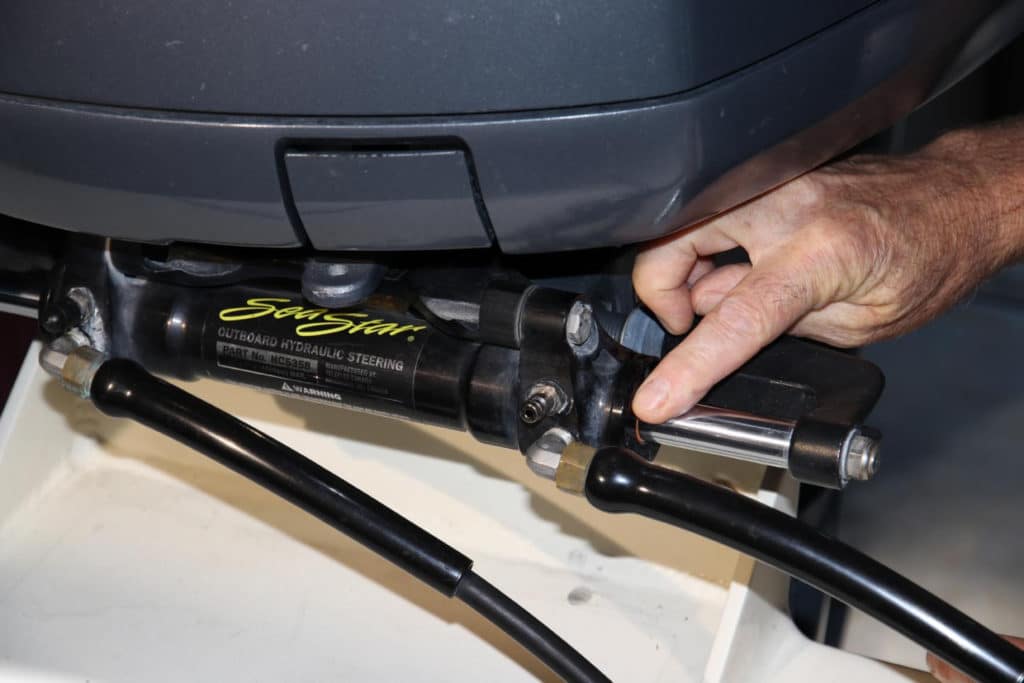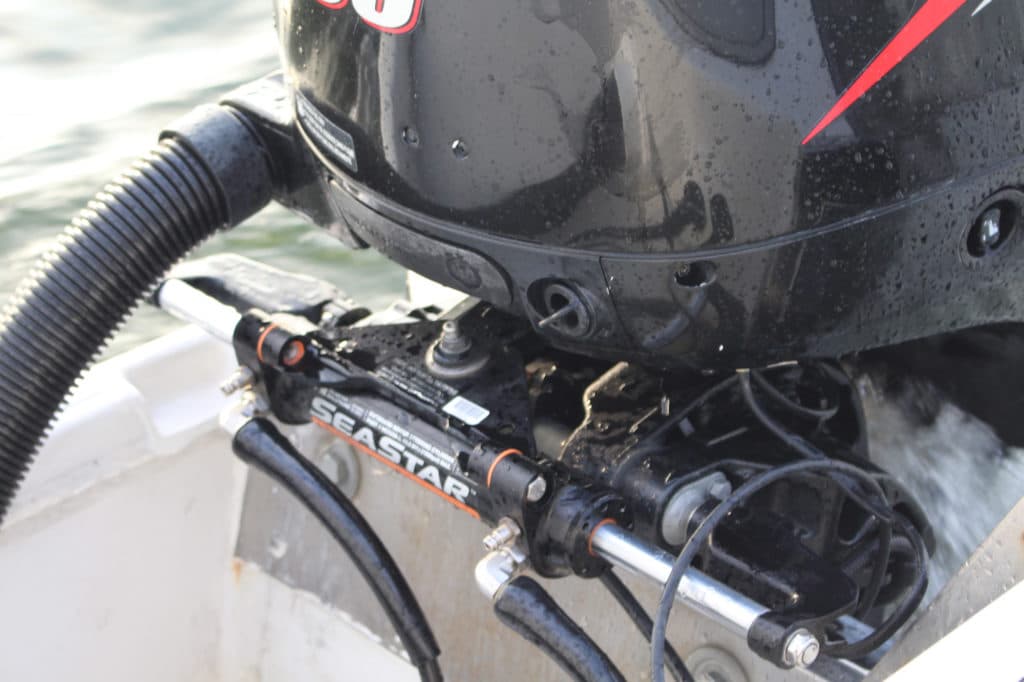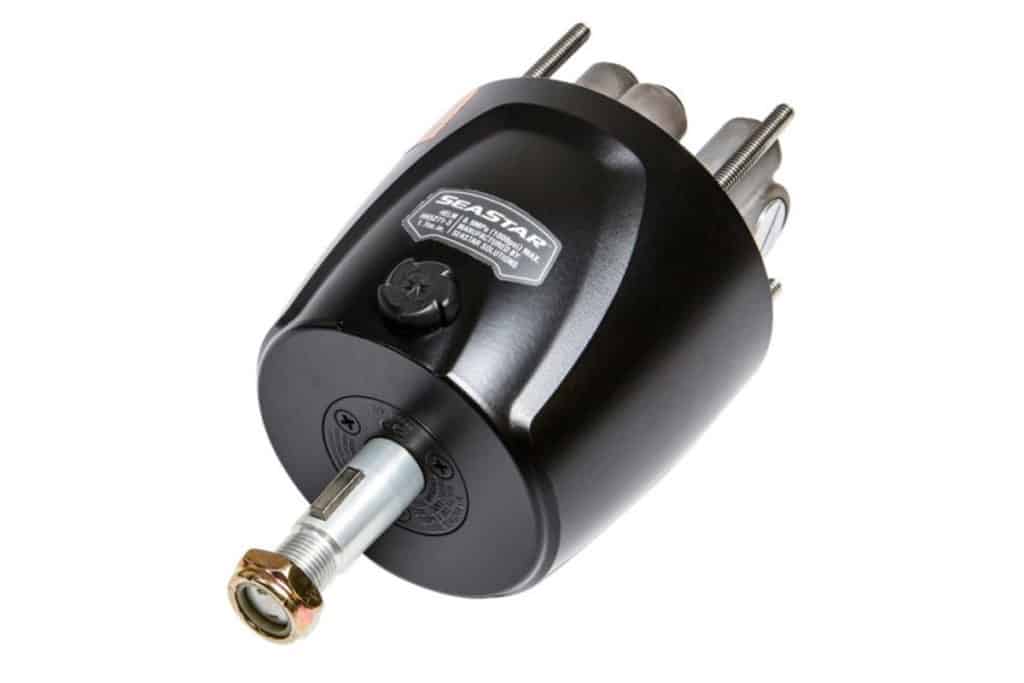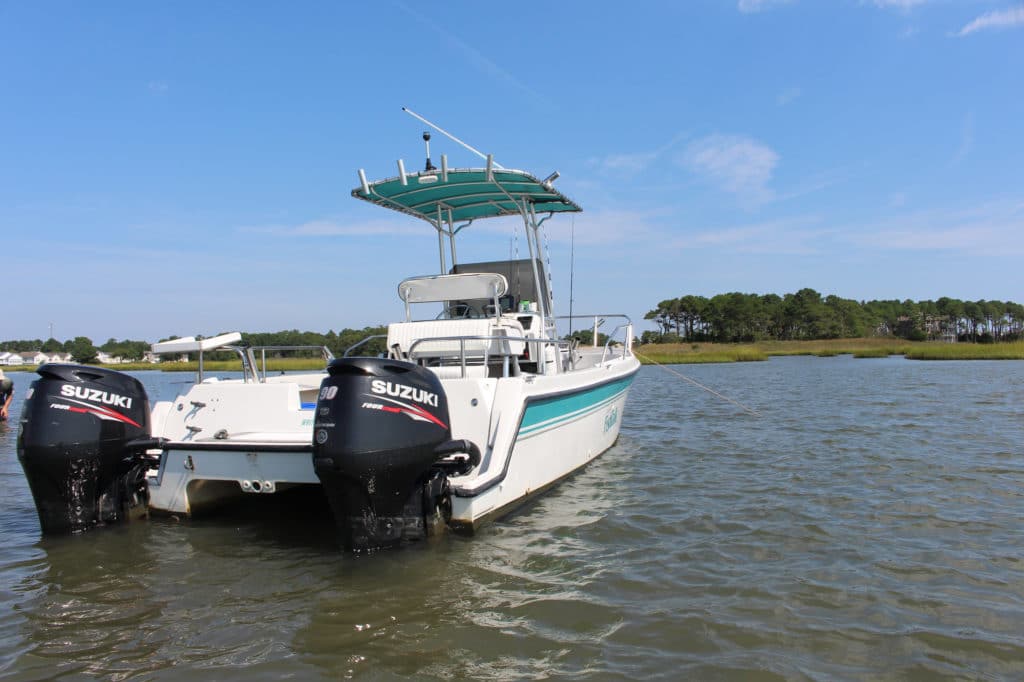
Outboard-engine hydraulic-steering systems are common on modern boats, and it’s no wonder why: they’re easy to operate, reliable and robust. But you may wonder, how does that hydraulic steering system work? And how does a boat owner keep it working properly?
How Outboard Hydraulic Steering Works
All outboard hydraulic steering systems have two main components: the helm and the cylinder. The helm incorporates a hydraulic pump and valves that force fluid into the hydraulic lines. Many helm units also incorporate the hydraulic fluid reservoir (though with some systems this is an individual component).
Back at the outboard, the cylinder is what actually turns the motor. When the steering wheel is turned one way or the other, the helm will pump fluid into either the port or starboard line to push the cylinder rod and turn the outboard.
Naturally, there are a lot of other smaller pieces and parts that also come into play. Depending on the exact steering system, additional hydraulic lines, reservoirs, autopilot pumps, valves, tie bars,and/or liquid tie bars may be used as well. Some of the newest digital systems may also have “smart” hydraulic cylinders and electronic helms, power assistance, and/or CANbus autopilots for fly-by-wire operation.

Maintaining Outboard Hydraulic Steering
Most outboard-engine hydraulic-steering systems are quite robust, but like any system, they require regular maintenance. The number one item for a boat owner to be aware of is the system’s fluid level. If the fluid level begins to drop, it’s indicative of a leak in the system and steering response will be impacted accordingly. So, before each and every use of the boat, perform a visual check of hydraulic fluid level as per the manufacturer’s instructions for the specific system. Note: if there is milky or discolored fluid when inspecting the fluid reservoir, water may have contaminated the system. This generally means identifying how water got into the fluid, resolving the issue, and then flushing the entire system. This can be a difficult task, and is usually best left to a professional.

Any time fluid level appears to have dropped-or if the steering wheel can be turned a quarter-turn or more without a satisfactory steering response- the lines and connection points should be checked for leaks. Run a hand along the lines to help identify any spots that may be chafed or worn, and if there is fluid felt at a low point in the lines follow it uphill to the source. Also, feel around connections and fittings for any leaking fluid. Tighten connections as necessary, and/or call a professional for repairs. Finally, run fingers around the glands on the cylinder ends. These can’t be tightened so if a leak is found, they’ll have to be replaced.
Owners also want to be aware of where age, the marine environment and wear may have taken a toll on the system’s parts. So, visual inspections should also be given to key components, including the exterior of the lines and all connection points, the cylinder and cylinder shaft, and the helm. When inspecting the cylinder shaft look for corrosion or damage, which may require replacement. The support rod should also be cleaned and greased annually. Additionally, inspect the helm unit both above and below the dash for corrosion and/or wear.

Bleeding an Outboard Hydraulic Steering System
If a leak is identified and fixed, hydraulic fluid needs to be added and any air has to be bled out of the system. This process is fairly simple for some systems and not so simple for others, and should be performed as per the manufacturer’s instructions. (Instructions should be readily available in the owner’s manual or via an internet search). Note, however, that this is commonly a two-person job as it can require manipulating the engine(s) and the wheel at the same time. It can also get messy because hydraulic fluid can be expelled from the reservoir during the process, so have plenty of oil-absorbent pads available.
When inspected and maintained regularly, most outboard-engine hydraulic steering systems last for years, often for just as long as the outboards themselves. Taking care of it properly, ensures easy and accurate steering for the long haul.









